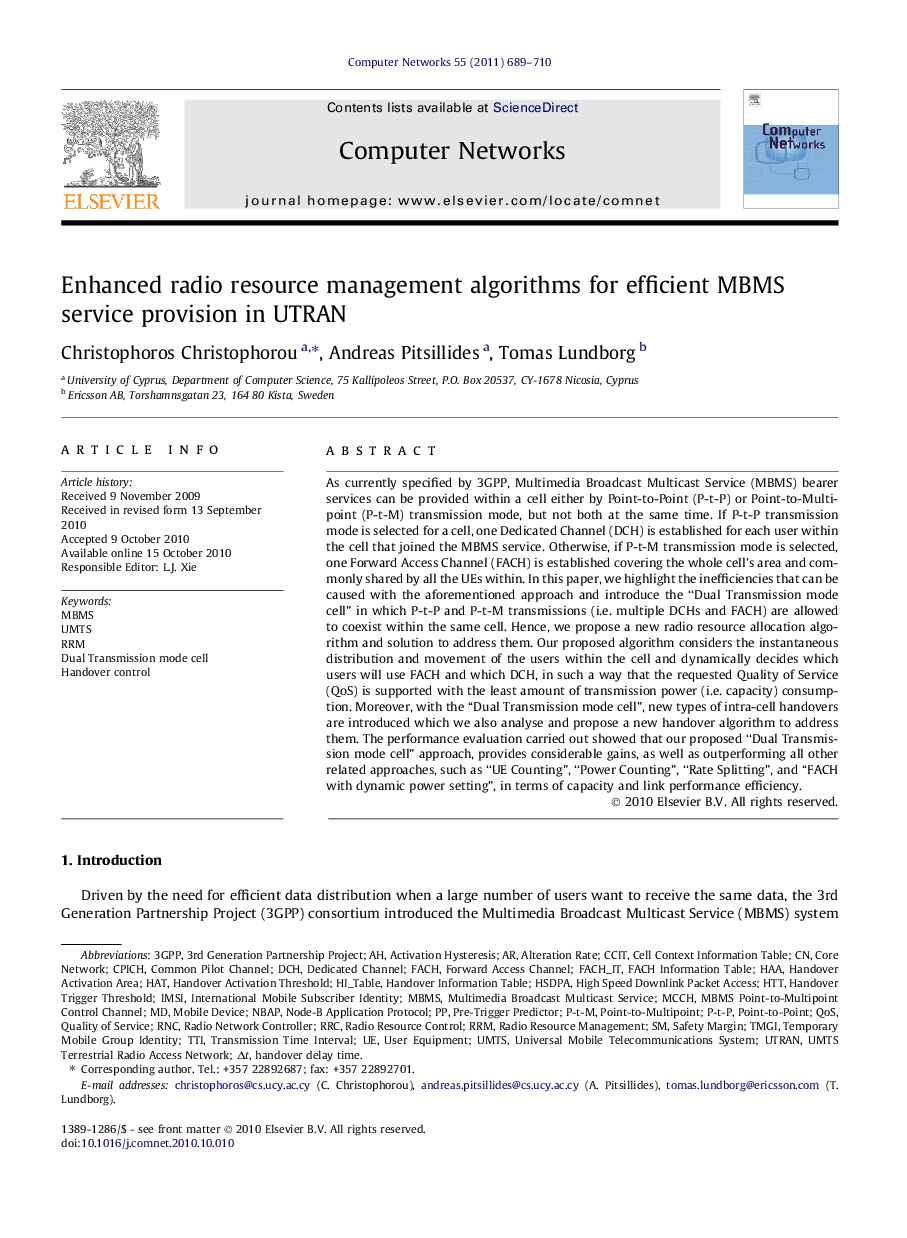| Article ID | Journal | Published Year | Pages | File Type |
|---|---|---|---|---|
| 10339523 | Computer Networks | 2011 | 22 Pages |
Abstract
As currently specified by 3GPP, Multimedia Broadcast Multicast Service (MBMS) bearer services can be provided within a cell either by Point-to-Point (P-t-P) or Point-to-Multipoint (P-t-M) transmission mode, but not both at the same time. If P-t-P transmission mode is selected for a cell, one Dedicated Channel (DCH) is established for each user within the cell that joined the MBMS service. Otherwise, if P-t-M transmission mode is selected, one Forward Access Channel (FACH) is established covering the whole cell's area and commonly shared by all the UEs within. In this paper, we highlight the inefficiencies that can be caused with the aforementioned approach and introduce the “Dual Transmission mode cell” in which P-t-P and P-t-M transmissions (i.e. multiple DCHs and FACH) are allowed to coexist within the same cell. Hence, we propose a new radio resource allocation algorithm and solution to address them. Our proposed algorithm considers the instantaneous distribution and movement of the users within the cell and dynamically decides which users will use FACH and which DCH, in such a way that the requested Quality of Service (QoS) is supported with the least amount of transmission power (i.e. capacity) consumption. Moreover, with the “Dual Transmission mode cell”, new types of intra-cell handovers are introduced which we also analyse and propose a new handover algorithm to address them. The performance evaluation carried out showed that our proposed “Dual Transmission mode cell” approach, provides considerable gains, as well as outperforming all other related approaches, such as “UE Counting”, “Power Counting”, “Rate Splitting”, and “FACH with dynamic power setting”, in terms of capacity and link performance efficiency.
Keywords
Related Topics
Physical Sciences and Engineering
Computer Science
Computer Networks and Communications
Authors
Christophoros Christophorou, Andreas Pitsillides, Tomas Lundborg,
